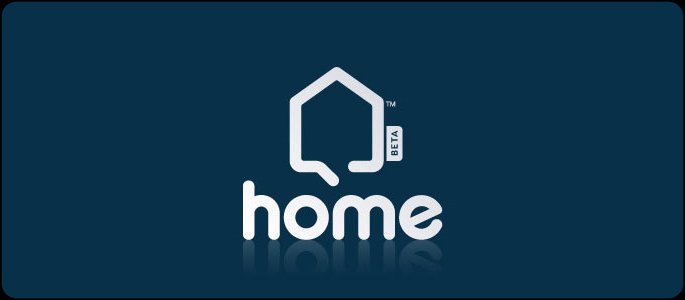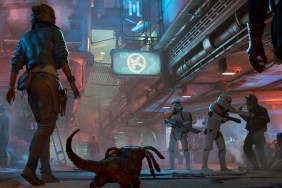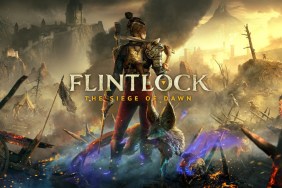
Many people still have a negative view of Home, do you think that is something that Sony needs to address, or, as a developer, you need to try and put across?
SC: I think it’s something that everybody needs to address, really, including the community; they are the people that can vouch for us. It needs to be a joint thing; we are obviously limited in what we can say because we are not Sony. So, they’ve got a bigger hand in it than we have.
BW: Yeah and obviously there’s an onus on us to make good stuff [laughs]
SC: [laughs] We are very aware of making what the community wants, and I think, that is a good thing with Home, because the publishing windows are so regular, new content is published every Thursday, you can quickly iterate things and quickly change things. That’s what makes Home a good platform for development.
So, how important do you think it is to interact with the community?
SC: I think it’s very important.
BW: Yeah, I would agree.
As you are a small company and your games are only within Home how do you try and advertise them to people who don’t have Home but have a PS3?
SC: I think, that’s something that Sony has done for us up to this point, we’ve had a lot of backing from Sony, really.
BW: …and obviously, there’s Facebook and Twitter and the more viral stuff. I think, these days that’s a big thing for everyone.
SC: Yeah, I think, that’s something we took into consideration during development, integrating Twitter and Facebook within the space. We’ve got the Facebook app so you can get your stats and stuff.
Sodium 1 has been very profitable, so why do you think there aren’t that many large-scale games for Home?
SC: I don’t know, I couldn’t say. I don’t know why… I guess, bigger companies are revisiting proven titles because people don’t know so much about Home and they don’t necessarily think it’s proving itself.
BW: Yeah, I just don’t know.
So, do you think it’s other developer’s own fault and that they are missing out on a good opportunity?
BW: That’s a dangerous question [laughs]
SC: I don’t know.
BW: I think, maybe there’s a big group that don’t necessarily realise what you can do. You’ve just got to have the imagination and you can do it.
But if a lot of developers started developing exclusive content for Home do you think that would damage your success?
SC: It would depend on who those developers were, and it would depend on, I don’t know…
BW: I don’t think it would…
SC: It’s nice to have competition.
BW: It’s just about staying ahead of the competition. It will force you to step your game up. I think it would be good.
SC: But it is nice for it to be a platform for smaller developers because larger developers have their outlet and this is just something new and agile that smaller developers can be involved in.
Home is available in many different regions but is different in each region – how do you handle localisation?
SC: Sometimes it can be a problem, we just recently launched in Japan. So, that’s been our biggest, most recent, challenge. Obviously, we’ve had to change some of the wording because it wouldn’t necessarily have worked well in Japanese. So, it has been a challenge, we’ve worked with it and it’s happened, but, yeah, it’s been fine, I think.
BW: That’s a challenge at any level, I think. It’s the same as any development across multiple regions.
If Sony were to add 3D or Move to Home would you support it?
SC: I don’t see why not, we’d want to support any kind of future feature, I think.
BW: Yeah, yeah absolutely, I mean if it’s there. I think the nice thing about Home is the new features; it’s kind of all there. If it’s added, you kind of have to support it. It’s kind of the whole package.
SC: Yeah, if it’s there you might as well, there’s no reason for a developer not to use it. And it’s just another avenue for our creativity.
Do you have an idea of Sony’s roadmap for Home? Or do they keep that to themselves?
SC: Certain things they will release, certain things they won’t. So, they do keep a lot of things to themselves. But what is good, like you said, is feature requests, so, if this particular thing about a development kit or about the future of Home is wanted by developers then they are quite prepared to listen to us and take those things forward
And what will your next project be?
BW: We are always working on different projects on different scales.
SC: As well as working on a lot of our own stuff we work on a lot of stuff for other people, so it’s whether or not the people we are working for want to say we are working for them or not. So, for example, we just worked with Ubisoft and they were quite happy to say we developed for them. But it’s the same thing if you are a third party.
Can you tease anything about your upcoming projects?
SC: No.
Since Sodium One is the first of its kind, how hard was it to create something like Sodium One since nothing like it had come before it inside Home?
Jamie Riding: Sodium One was a large undertaking, and something of a step in the dark. Although project was by no means a walk in the park, the Home platform is developing all the time meaning projects like Sodium will become increasingly easy for developers to undertake. The team had to learn a lot of unique tricks and develop specific tools to make the most out of what Home has to offer. We’re incredibly lucky to have such a passionate and ingenuitive team behind the project!
Has there been anything the users of Home have done with Sodium One that took you guys by total surprise and weren’t expecting?
JR: The extent to which people have taken to playing the role of bartender in Scorpio’s bar has been a real surprise. Home users clearly appreciate the opportunity to role-play in a more meaningful way and this is something we’re looking at offering more of in the future!
How many Sodium users are there?
JR: Sorry to be coy again, but all I can say is that our unique users number is approaching a special figure which we aim on celebrating and giving back a little something special to the community.
Do you have any other revolutionary Home idea’s that you guys can hint about or tell us anything about?
JR: We have a number of interesting projects planned for the next 6 months. But I’m afraid nothing I can reveal just yet. Producing content for Home you’re working with such short production schedules that things can change significantly from week to week. We wouldn’t want to disappoint anybody!
PlayStation LifeStyle would like to thank Sophia Coney, Barney Williams, Jamie Riding and Outso for taking the time to hold the interview. Stay tuned to PSLS for more interviews, news and reviews.
SC: I’m Sophia Coney, I’m the Art Manager for Outso.
BW: I am Barney Williams and I’m Producer at Outso.
During the conference, it was said that there was a 25% conversion rate from free Sodium users to paying ones – was that what you were expecting?
SC: I think, it was more than we were expecting, we kind of went into it blind , it was the first time anybody had done that on Home. So no, we weren’t quite expecting those numbers.
SC: We developed our own metrics gathering system, Playmetrix, to gather the numbers. We didn’t really expect to see these numbers appearing in the daily and monthly charts, so it was a nice surprise.
We also tracked a number of other statistics with our system; user numbers, levels completed in the game, right down to the amount of Scorpions Stomped, which has grown to a massive number! The benefit of this analysis was being able to gain feedback from player behavior which directly helped us improve conversion rates, as a result Playmetrix is something we are now using in all of our projects and currently expanding out across the industry. We think it is an extremely powerful tool, obviously in Sodium 2 we expect to see big numbers again.
BW: It was certainly something we were conscious of while we were working on it …
SC: …it’s always been something we’ve been trying to maintain since the initial figures. What, I think, is more telling is trying to retain those figures over a longer period of time. We’ve had good retention over the last 6 months.
You said you were first to quite a lot of these initiatives, but you are quite a small company, so why do you think you can afford to take these risks?
SC: I think it is because we are small and we are agile. I mean, if all of a sudden we need to expand, we can, we are not tied to any of the larger developers in any way.
BW: I think it’s the imagination, you know? You’ve got to have the idea to do it. I think, there is a good team at Outso and they’ve got plentiful ideas and the skills to back it up.
Can you talk about how long and how much it costs to make Sodium 1?
SC: Well, it took 6 months to make, can’t really talk about how much it cost. It took 6 months with a team between 6 and 9.
Cox showed that they can cost between $25000 and one million dollars …
SC: Yeah, ours was within that bracket
Lower or higher end? (Removing this question)
How long do you plan supporting Sodium 1?
SC: As long as it continues to be successful.
BW: …and we are doing everything to make sure it stays that way.
SC: …and we’ve got Sodium 2 coming out which will help build a bigger world, and we do have plans when both of those are successful for Sodium to continue.
So when is Sodium 2 out then?
SC: Probably the 4th quarter of 2010.
BW: Yeah, I couldn’t say anything else than that.
SC: Barney is no longer on the Sodium team and I’m still working with the team on Sodium 2; but we’re both currently focused on different stuff.
…and is that stuff for Home?
SC: Yes.
So, are all the projects you are doing related to Home?
SC: Pretty much.
BW: Yeah.
Can you say how many projects there are?
SC: How many? I don’t know, not really.
BW: Yeah, we always have multiple projects going.
SC: Yeah, we never have one or two things going at once, it’s always more.
BW: We always have a few things going on at various stages
Another thing mentioned in Cox’s conference was user generated content, is that something you would consider trying to take on?
SC: Yes, it is. It’s stuff that we’ve thought about and that we’d like to do in the future, but it’s whether we’re actually able to do it or not, because certain things are vetted by Sony. You have to be quite careful about what you can do.
BW: It’s the same with any platform, isn’t it? They have issues with user generated content and stuff but I think, everyone feels it’s a win:win situation, really. Users get involved and there’s more content.
So, are any your products involved with user generated content?
SC: I don’t think we should say….
BW: It’s something we are always considering, it’s something we are always conscious of, it’s something that’s always a factor. It’s a part of a lot of games, so it’s obviously a huge thing, so it’s something we have to keep in mind.
Many people still have a negative view of Home, do you think that is something that Sony needs to address, or, as a developer, you need to try and put across?
SC: I think it’s something that everybody needs to address, really, including the community; they are the people that can vouch for us. It needs to be a joint thing; we are obviously limited in what we can say because we are not Sony. So, they’ve got a bigger hand in it than we have.
BW: Yeah and obviously there’s an onus on us to make good stuff [laughs]
SC: [laughs] We are very aware of making what the community wants, and I think, that is a good thing with Home, because the publishing windows are so regular, new content is published every Thursday, you can quickly iterate things and quickly change things. That’s what makes Home a good platform for development.
So, how important do you think it is to interact with the community?
SC: I think it’s very important.
BW: Yeah, I would agree.
As you are a small company and your games are only within Home how do you try and advertise them to people who don’t have Home but have a PS3?
SC: I think, that’s something that Sony has done for us up to this point, we’ve had a lot of backing from Sony, really.
BW: …and obviously, there’s Facebook and Twitter and the more viral stuff. I think, these days that’s a big thing for everyone.
SC: Yeah, I think, that’s something we took into consideration during development, integrating Twitter and Facebook within the space. We’ve got the Facebook app so you can get your stats and stuff.
Sodium 1 has been very profitable, so why do you think there aren’t that many large-scale games for Home?
SC: I don’t know, I couldn’t say. I don’t know why… I guess, bigger companies are revisiting proven titles because people don’t know so much about Home and they don’t necessarily think it’s proving itself.
BW: Yeah, I just don’t know.
So, do you think its other developer’s own fault and that they are missing out on a good opportunity?
BW: That’s a dangerous question [laughs]
SC: I don’t know.
BW: I think, maybe there’s a big group that don’t necessarily realise what you can do. You’ve just got to have the imagination and you can do it.
But if a lot of developers started developing exclusive content for Home do you think that would damage your success?
SC: It would depend on who those developers were, and it would depend on, I don’t know…
BW: I don’t think it would…
SC: It’s nice to have competition.
BW: It’s just about staying ahead of the competition. It will force you to step your game up. I think it would be good.
SC: But it is nice for it to be a platform for smaller developers because larger developers have their outlet and this is just something new and agile that smaller developers can be involved in.
Home is available in many different regions but is different in each region – how do you handle localisation?
SC: Sometimes it can be a problem, we just recently launched in Japan. So, that’s been our biggest, most recent, challenge. Obviously, we’ve had to change some of the wording because it wouldn’t necessarily have worked well in Japanese. So, it has been a challenge, we’ve worked with it and it’s happened, but, yeah, it’s been fine, I think.
BW: That’s a challenge at any level, I think. It’s the same as any development across multiple regions.
If Sony were to add 3D or Move to Home would you support it?
SC: I don’t see why not, we’d want to support any kind of future feature, I think.
BW: Yeah, yeah absolutely, I mean if it’s there. I think the nice thing about Home is the new features; it’s kind of all there. If it’s added, you kind of have to support it. It’s kind of the whole package.
SC: Yeah, if it’s there you might as well, there’s no reason for a developer not to use it. And it’s just another avenue for our creativity.
Do you have an idea of Sony’s roadmap for Home? Or do they keep that to themselves?
SC: Certain things they will release, certain things they won’t. So, they do keep a lot of things to themselves. But what is good, like you said, is feature requests, so, if this particular thing about a development kit or about the future of Home is wanted by developers then they are quite prepared to listen to us and take those things forward
And your next project to come out, is that going to be Sodium 2?
BW: We are always working on different projects on different scales.
SC: As well as working on a lot of our own stuff we work on a lot of stuff for other people, so it’s whether or not the people we are working for want to say we are working for them or not. So, for example, we just worked with Ubisoft and they were quite happy to say we developed for them. But it’s the same thing if you are a third party.
Can you tease anything about your upcoming projects?
SC: No








